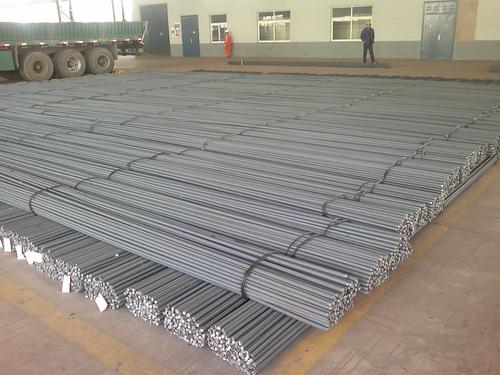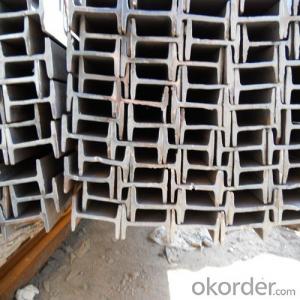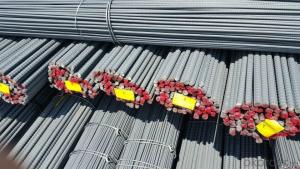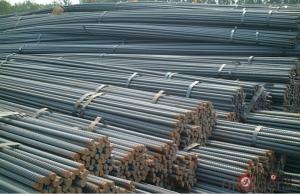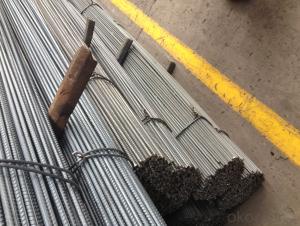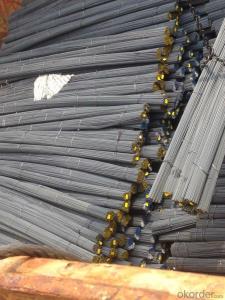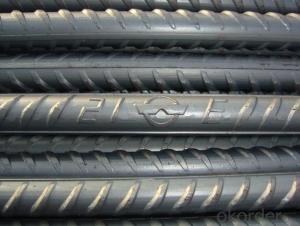HR Dedormed Steel Rebars
- Loading Port:
- Tianjin
- Payment Terms:
- TT OR LC
- Min Order Qty:
- -
- Supply Capability:
- 200000 m.t./month
OKorder Service Pledge
OKorder Financial Service
You Might Also Like
Specifications of Hot Rolled Deformed Steel Rebar:
Standard | GB UK USA | HRB335 HRB400 HRB500 G460B, B500A, B500B,B500C GR40, GR60 | |
Diameter | 6mm,8mm,10mm,12mm,14mm,16mm,18mm,20mm, 22mm,25mm,28mm,32mm,36mm,40mm,50mm | ||
Length | 6M, 9M,12M or as required | ||
Payment term | TT or L/C | ||
Trade terms | FOB, CFR, CIF | ||
Application | Building, construction | ||
Each bundle weight | 2-3MT, or as required | ||
Type | Hot rolled steel rebar | ||
Brand name | DRAGON | ||
Theoretical weight and section area of each diameter as below for your information:
Diameter(mm) | Section area (mm²) | Mass(kg/m) | Weight of 12m (kg) | Pcs/ton |
6 | 28.27 | 0.222 | 2.664 | 375.38 |
8 | 50.27 | 0.395 | 4.74 | 210.97 |
10 | 78.54 | 0.617 | 7.404 | 135.06 |
12 | 113.1 | 0.888 | 10.656 | 93.84 |
14 | 153.9 | 1.21 | 14.52 | 68.87 |
16 | 201.1 | 1.58 | 18.96 | 52.74 |
18 | 254.5 | 2.00 | 24 | 41.67 |
20 | 314.2 | 2.47 | 29.64 | 33.74 |
22 | 380.1 | 2.98 | 35.76 | 27.96 |
25 | 490.9 | 3.85 | 46.2 | 21.65 |
28 | 615.8 | 4.83 | 57.96 | 17.25 |
32 | 804.2 | 6.31 | 75.72 | 13.21 |
36 | 1018 | 7.99 | 98.88 | 10.43 |
40 | 1257 | 9.87 | 118.44 | 8.44 |
50 | 1964 | 15.42 | 185.04 | 5.40 |
Deformed Steel Rebar in warehouse
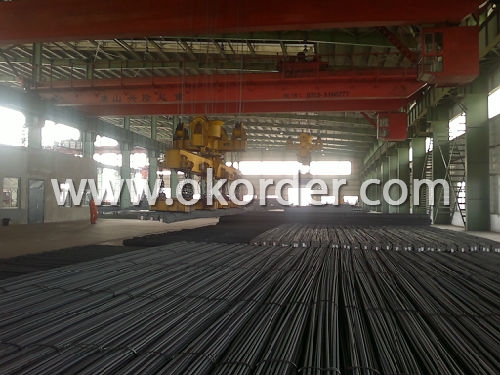
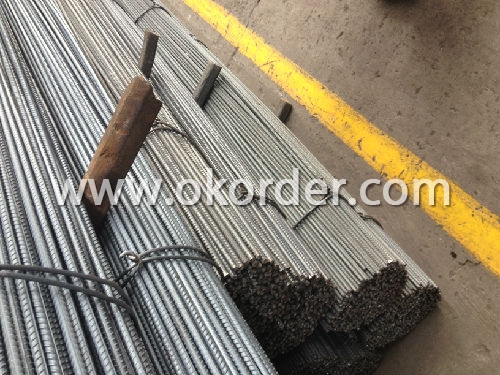
Usage and Applications of Hot Rolled Deformed Steel Rebar:
Deformed bar is widely used in buildings, bridges, roads and other engineering construction. Big to highways, railways, bridges, culverts, tunnels, public facilities such as flood control, dam, small to housing construction, beam, column, wall and the foundation of the plate, deformed bar is an integral structure material. With the development of world economy and the vigorous development of infrastructure construction, real estate, the demand for deformed bar will be larger and larger..
Packaging & Delivery of Hot Rolled Deformed Steel Rebar:
Packaging Detail: products are packed in bundle and then shipped by container or bulk vessel, deformed bar is usually naked strapping delivery, when storing, please pay attention to moisture proof. The performance of rust will produce adverse effect.
Delivery Detail: within 45 days after received advanced payment or LC.
Label: to be specified by customer, generally, each bundle has 1-2 labels
Note:
1. Our products are produced according to national standard (GB), if not, supply according to national standards (GB) or agreement as customer required.
2. Other Grade and Standard Deformed Steel Bar we can supply:
Grade: GR40/GR60, G460B/B500A/B500B/B500C,BST500S
Standard: ASTM, BS, DIN
The Minimum Order Quantity of these products is high, and need to be confirmed.
3. We can not only supply Deformed Steel Bar; if you need anything about building materials, please contact us for further information.
4. Please send us your detail specifications when inquire. We will reply to you as soon as possible. We sincerely hope we can establish a long stable business relationship.
- Q: How are steel H-beams different from other types of beams?
- Steel H-beams, also known as H-sections, are distinct from other types of beams due to their specific shape and structural properties. The main difference lies in their cross-sectional shape, which resembles the letter "H." This unique shape provides significant advantages over other beam types. Firstly, the H-beam's shape allows for a higher load-bearing capacity compared to other beams with similar weight. This is because the shape of the H-beam distributes the weight evenly along its length, maximizing its ability to withstand heavy loads. As a result, H-beams are widely used in construction projects that require strong and durable structural support, such as in the construction of high-rise buildings, bridges, and industrial facilities. Secondly, H-beams offer greater structural stability. The flanges, or top and bottom horizontal sections of the H-beam, provide resistance against bending and twisting forces. This characteristic makes H-beams more resistant to deformations and enables them to maintain their shape under heavy loads. Furthermore, the web, or vertical section of the H-beam, provides additional support and rigidity, ensuring the overall stability of the structure. Another key advantage of H-beams is their versatility. Due to their inherent strength and stability, H-beams can span longer distances without the need for intermediate supports. This allows for larger open spaces and more flexible architectural designs. Additionally, H-beams can be easily welded together to create longer beams, further expanding their application possibilities. Lastly, H-beams offer cost-effectiveness. Despite their robustness, H-beams are relatively lightweight compared to their load-bearing capacity. This reduces transportation costs and simplifies the installation process, making them a cost-effective choice for construction projects. In summary, steel H-beams differ from other types of beams due to their unique cross-sectional shape, which provides increased load-bearing capacity, structural stability, versatility, and cost-effectiveness. These characteristics make H-beams the preferred choice for various construction applications where strength, durability, and efficiency are crucial factors.
- Q: Are steel H-beams resistant to chemical exposure or spills?
- Yes, steel H-beams are generally resistant to chemical exposure or spills. Steel is known for its durability and resistance to various chemicals, making H-beams a suitable choice for environments where chemical exposure or spills may occur. However, the specific resistance can vary depending on the type and concentration of chemicals involved.
- Q: Can Steel H-Beams be used in both indoor and outdoor construction projects?
- Yes, Steel H-Beams can be used in both indoor and outdoor construction projects. They are commonly used in various applications such as residential, commercial, and industrial construction projects, both indoors and outdoors. Steel H-Beams provide structural support and stability, making them suitable for a wide range of construction projects regardless of the environment.
- Q: Why is it that the steel pile is low in cost and easy to construct, and it can be changed when there is an obstacle
- This is the specification of hot-rolled narrow flange section steel.Cross section 300, flange width 150, web thickness 6.5, flange thickness 9.
- Q: What are the transportation considerations for steel H-beams?
- Transportation considerations for steel H-beams primarily revolve around their size, weight, and safety requirements. Firstly, the size of steel H-beams is an important consideration for transportation. These beams are typically large and bulky, ranging in length from a few meters to over 20 meters. As a result, special transport arrangements may be necessary, such as using flatbed trucks, trailers, or even railcars, depending on the distance and infrastructure available. Additionally, the width and height of the beams may require special permits or escorts during transportation to ensure compliance with road regulations. Secondly, the weight of steel H-beams is a crucial factor. These beams can weigh several tons, depending on their size and dimensions. Therefore, it is important to ensure that the transportation equipment, including the vehicles and lifting apparatus, can handle the weight safely. Specialized cranes or forklifts may be required to load and unload the beams at both the pickup and delivery locations. Safety is another critical consideration when transporting steel H-beams. Due to their size and weight, proper securing and bracing techniques should be employed to prevent shifting or tipping during transit. This may involve using chains, straps, or other restraints to secure the beams to the transport vehicle or container. Additionally, the beams should be adequately protected from the elements, such as rain or snow, to prevent corrosion or damage during transportation. Finally, logistical considerations should be taken into account. This includes determining the most efficient route for transportation, considering factors such as road conditions, weight restrictions, and traffic congestion. It may also involve coordinating delivery schedules to ensure that the beams arrive at the desired location within the required timeframe. Overall, the transportation considerations for steel H-beams involve managing their size, weight, safety, and logistics to ensure a successful and efficient delivery.
- Q: Can steel H-beams be used in wastewater treatment plant construction?
- Indeed, steel H-beams are applicable for construction in wastewater treatment plants. Their strength and durability render them a popular choice in the construction field. In the realm of wastewater treatment plants, these beams serve a multitude of structural purposes, including the support of heavy equipment, the formation of building frameworks, and the provision of load-bearing reinforcement for pipelines and ductwork. The corrosion-resistant properties of steel make it an ideal material for deployment in wastewater treatment plants, where exposure to water, chemicals, and other adverse environmental conditions is commonplace. Moreover, steel H-beams can be customized to meet specific design specifications, thereby establishing their versatility as a construction option within the wastewater treatment industry.
- Q: Can steel H-beams be used for supporting water treatment plants?
- Yes, steel H-beams can be used for supporting water treatment plants. Steel H-beams are known for their strength and load-bearing capacity, making them suitable for providing structural support to large infrastructure projects like water treatment plants. They offer stability and durability, ensuring the safe and efficient functioning of the facility.
- Q: Are Steel H-Beams resistant to UV radiation or fading?
- UV radiation and fading are not things that steel H-beams naturally resist. Carbon steel, the primary material used in constructing steel H-beams, lacks inherent UV resistance. When exposed to UV radiation over time, the steel can undergo oxidation, leading to rust formation and eventual material degradation. To safeguard steel H-beams from UV radiation and fading, manufacturers often use protective coatings like paint or galvanization. These coatings create a barrier between the steel and UV radiation, preventing direct contact and reducing the risk of fading or degradation. However, it's important to note that these protective coatings may require regular maintenance and reapplication to ensure long-term protection against UV radiation. Furthermore, external factors like climate, humidity levels, and the intensity of UV exposure can impact the rate at which steel H-beams fade or degrade due to UV radiation. Regular inspection and maintenance can help detect any signs of fading or degradation in steel H-beams, allowing for timely repairs or replacements to uphold their structural integrity.
- Q: Can steel H-beams be used for sports facilities?
- Yes, steel H-beams can be used for sports facilities. Steel H-beams are commonly used in the construction industry for their strength and durability. They provide excellent support and can withstand heavy loads, making them suitable for sports facilities that require large open spaces and high ceilings. Steel H-beams can be used for constructing the framework of indoor sports arenas, gymnasiums, and stadiums, providing a stable and secure structure for various sporting activities. Additionally, steel H-beams can be customized to meet specific design and architectural requirements, allowing for flexibility in the construction of sports facilities.
- Q: What are steel H-beams?
- Steel H-beams are structural beams made of steel with an H-shaped cross-section. They are commonly used in construction and engineering projects to provide support and stability to structures such as buildings, bridges, and platforms. The H shape allows the beam to withstand heavy loads and distribute weight evenly, making them ideal for carrying large amounts of weight over long spans.
Send your message to us
HR Dedormed Steel Rebars
- Loading Port:
- Tianjin
- Payment Terms:
- TT OR LC
- Min Order Qty:
- -
- Supply Capability:
- 200000 m.t./month
OKorder Service Pledge
OKorder Financial Service
Similar products
Hot products
Hot Searches
Related keywords




